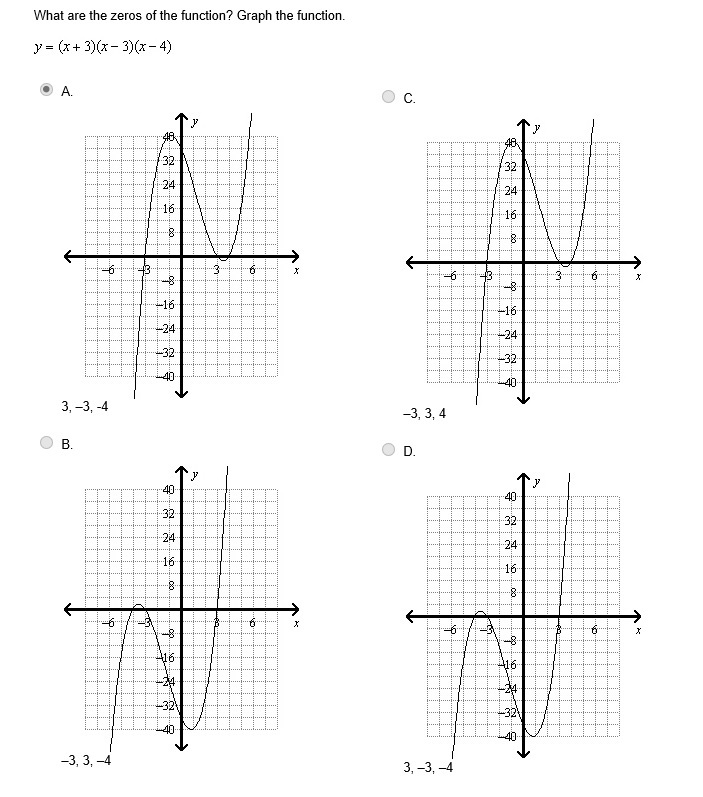Please help me on this question! Graph the function?

I think the answer is C but i'm not 100% sure!
No vote yet
1 vote

I think the answer is C but i'm not 100% sure!
Easy Math Editor
This discussion board is a place to discuss our Daily Challenges and the math and science related to those challenges. Explanations are more than just a solution — they should explain the steps and thinking strategies that you used to obtain the solution. Comments should further the discussion of math and science.
When posting on Brilliant:
*italics*or_italics_**bold**or__bold__paragraph 1
paragraph 2
[example link](https://brilliant.org)> This is a quote# I indented these lines # 4 spaces, and now they show # up as a code block. print "hello world"\(...\)or\[...\]to ensure proper formatting.2 \times 32^{34}a_{i-1}\frac{2}{3}\sqrt{2}\sum_{i=1}^3\sin \theta\boxed{123}Comments
The answer is C. Set each factor of the formula of the function equal to 0 and solve for x in order to find the x-intercepts: x + 3 = 0 then x = - 3; x - 3 = 0 then x = 3; x - 4 =0 then x = 4. Therefore, the graph of the function has x-intercepts - 3, 3 and 4.
Log in to reply
A has the same solutions...Why not A??
Log in to reply
Because the zeros in A) are not in ascending order. That's why I would select C) as my answer.
Log in to reply
But that's not a necessary reason?? Is it?
Log in to reply
No, it is not but I think it makes C) more appropiate
Log in to reply
What if i jumble the terms and write them as y=(x-3)(x+3)(x-4), Then?? There is no difference...between the two functions...so, now?
Log in to reply
The zeros would still be the same and if you order them, the list will be - 3, 3 and 4.
Thank you! I tried A the first time I took the test and got it wrong so I was pretty sure it had to be C but I thought double check! :)
Log in to reply
Note that though the graph is the same, the answer to the second question of "What are the zeros of the function" are different.
Answers in A are 3,−3,−4, answers in C are −3,3,4.
Log in to reply
Yes, you are right. I didn't see the negative sign of - 4 in the option A), it is pretty small hehehehe. So the only correct option is C).
The answer could be both A and C...i am not able to see a difference between them!!
Only (c) can be the correct answer... As zeroes of the function suggest